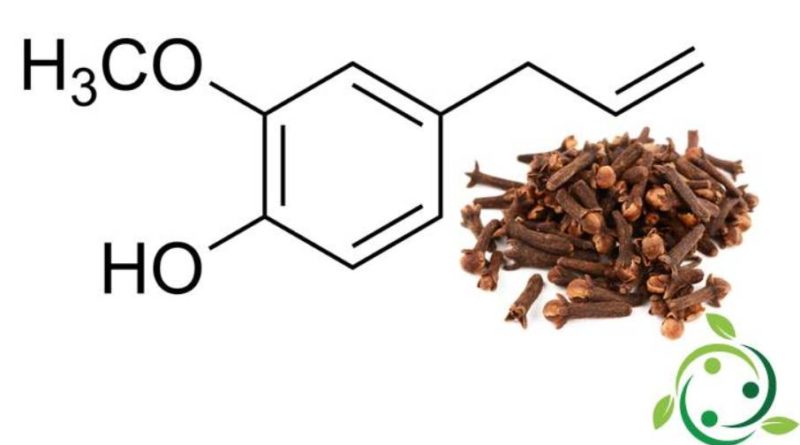Eugenol
Eugenol
Eugenol whose term in the official IUPAC nomenclature is: 2-methoxy-4- (prop-2-en-1-yl) -phenol has a brute or molecular formula: C10H12O2.
Eugenol is a hydroxylated aromatic compound, a guaiacolo with modified chain and is a member of the chemical class of allylbenzenes.
Eugenol is an oily liquid, from almost colorless to light yellow, which is present in nature and is extracted from some essential oils, such as clove oil (which contain about 70-80% eugenol) and from cinnamon. However, this substance is also present in basil, nutmeg, sassafras and myrrh.
It is a substance slightly soluble in water, while it is soluble in organic solvents. It also has a pleasant, spicy smell, similar to clove.
Eugenol has an antibacterial and antiparasitic activity, as well as that of insect repellent. In fact, in nature some plants have the ability to produce substances, such as eugenol, as a defense mechanism against attack by fungi and bacteria. In ancient times, clove oil was used by the Egyptians precisely in embalming practices due to its high antimicrobial power.
Furthermore, in the chemical industry, eugenol is the starting product for the synthesis of vanillin, in perfumes and in dentistry.
For this reason, for example, clove oil is used in the cosmetic field and, in particular, as an aromatic component in toothpastes, soaps, detergents, creams, lotions and perfumes.
Be careful, however, because clove oil can cause skin irritation and sensitization even at low doses so whether it is used topically, or orally it must be used with caution as it can trigger irritation or allergic phenomena that are difficult to foresee .
In fact, eugenol has allergenic characteristics and is one of the 26 substances that can potentially induce allergic reactions in a greater percentage than others.
For this reason, the current legislation provides that the presence of one or more of these substances, including eugenol, is duly indicated on the label.
In the dental field, eugenol is used against toothache and as a carminative. Eugenol also has disinfectant activity and light local anesthetic and anti-inflammatory properties. Furthermore, due to its properties, it is used, mixed with zinc oxide, for temporary fillings, as a substrate for fillings and as an impression material. believes that it has a soothing effect on the dental pulp and also a limited germicidal effect. Here too, however, due to its allergenic properties, some patients treated with eugenol-based preparations have experienced local irritative phenomena affecting the mucosa of the oral cavity and hypersensitivity reactions.
As regards its other uses, eugenol derivatives are used as aromas and in perfumery, present in the compositions of UV absorbents, analgesics, antibiotics and antiseptics. They are also used in the production of stabilizers and antioxidants for plastic and rubber. It is also used as a basis for the synthesis of propanidide.
As a precaution, please remember that in case of overdose with eugenol, the symptoms range from convulsions, to diarrhea, nausea, fainting, and tachycardia.
Warning: The information shown is not medical advice and may not be accurate. The contents are for illustrative purposes only and do not replace medical advice.

